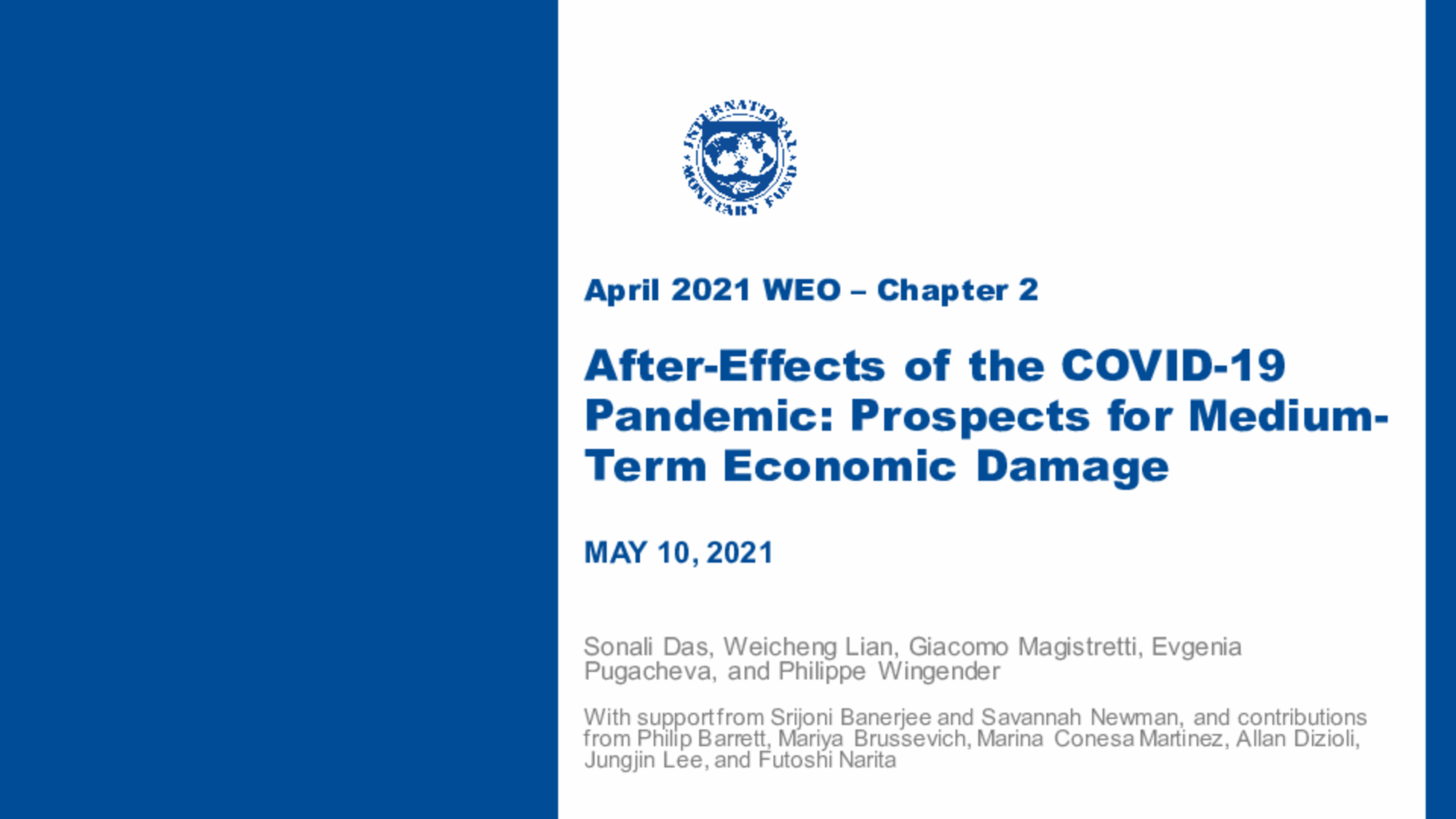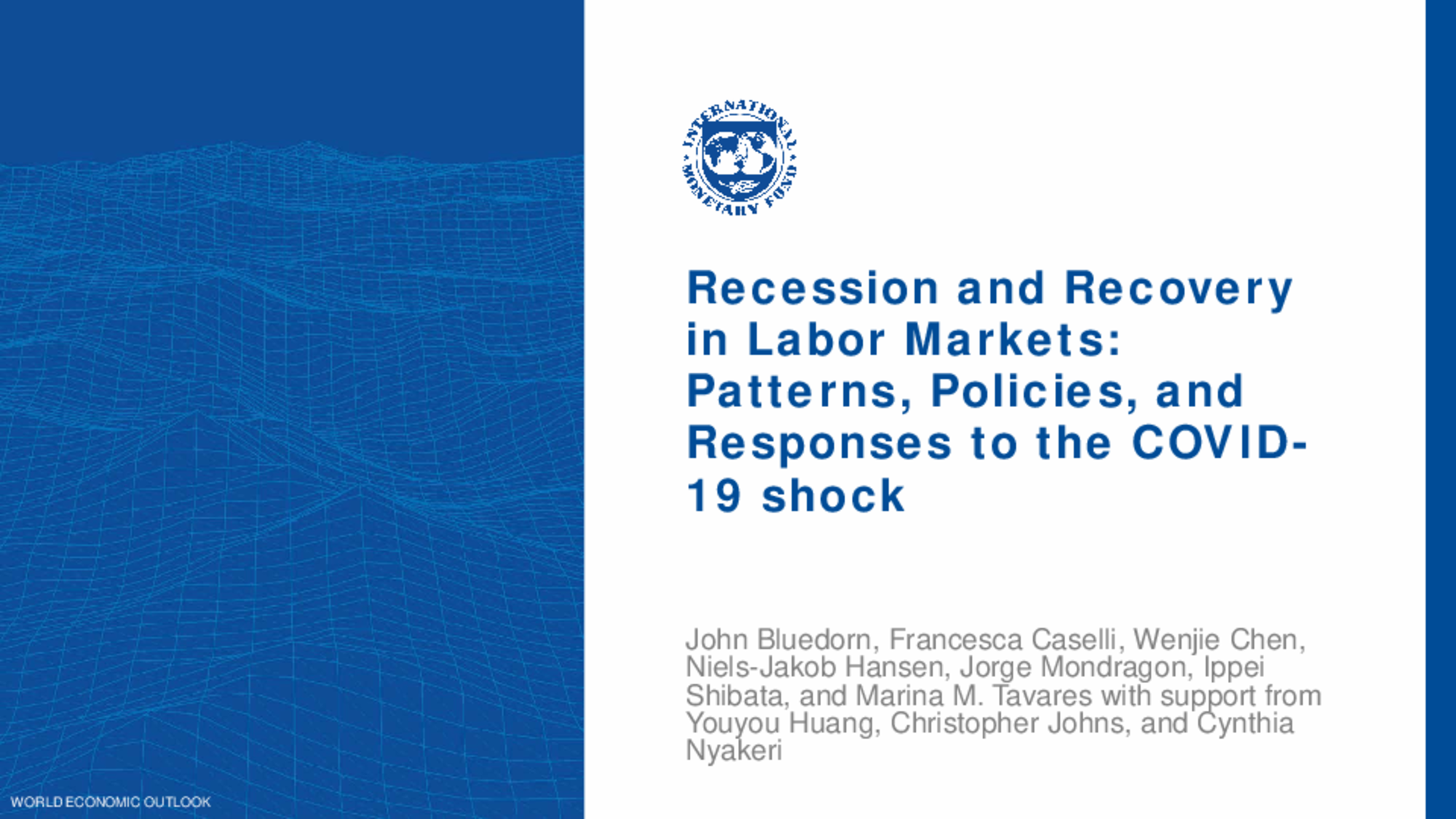Medium-term Scarring and the Unequal Labor Market Impacts of the COVID-19 Recession: Patterns and Policies for the Recovery
Monday, May 10
Presenters
Marina M. Tavares, Economist in the Structural Reforms Unit of the IMF’s Research Department
Philippe Wingender, Senior Economist in the World Economic Studies division of the IMF’s Research Department
Moderator
Holger Flörkemeier, Deputy Director, Joint Vienna Institute
The COVID-19 pandemic has led to a severe global recession with differential impacts within and across countries. A key question facing policymakers is the extent of persistent damage (scarring) that may result from this crisis. Moreover, the crisis had very heterogeneous impacts across occupations and economic sectors. A vital lesson to draw from this experience is how economic and social policies can lessen the severe and unequal effects on different groups of workers. Mr. Philippe Wingender and Ms. Marina M. Tavares of the IMF’s Research Department offered some answers to these questions, drawing on two analytical chapters of the latest IMF World Economic Outlook report.
Mr. Wingender focused his presentation on the potential scarring from the COVID-19 recession. He examined the possible persistent effects of the pandemic and the channels through which they may occur. The analysis of historical recession episodes suggests that deep recessions often leave lasting scars, mainly through lower productivity. This is particularly the case when recessions are accompanied by financial instabilities, which, importantly, have largely been avoided in the current crisis so far. The concentration of the pandemic's initial impact on contact-intensive services has also generated lower sectoral spillovers than in most previous recessions. However, the sheer size of the disruption has still resulted in a large shock to the broader economy.
Expected medium-term output losses from the pandemic are substantial, with global output in 2024 expected to be about 3 percent lower than anticipated before the crisis. Output losses will likely be smaller than after the global financial crisis, assuming that the pandemic is brought under control globally by the end of 2022. The degree of expected scarring varies across countries, depending on the structure of economies and the size of the policy response. Emerging market and developing economies are expected to suffer more scarring than advanced economies. Mr. Wingender added that policymakers should continue to provide support to the most affected sectors and workers while the pandemic is ongoing. Remedial policies for the setback to human capital accumulation, measures to lift investment, and initiatives to support sectoral reallocation (retraining, reskilling, and insolvency procedures) will be key to address long-term GDP losses and the rise in inequality.
Ms. Tavares further deepened the discussion of the pandemic's unequal impact on different groups of workers. She showed that youth and lower-skilled workers have been most heavily impacted. Unemployment rates for these two groups have risen sharply, from already high initial levels compared to other employment groups. Some of these effects reflect the asymmetric, sectoral, and occupational nature of the COVID-19 shock, with less skill-intensive sectors tending to be hit harder. Ms. Tavares also discussed how the pandemic shock is accelerating preexisting employment trends, hastening the shift to automation in more vulnerable sectors.
In the last part of her presentation, Ms. Tavares discussed the cost associated with job reallocation. A study of past recessions suggests that the pandemic is likely to inflict sizable costs on the unemployed, particularly lower skilled workers. After unemployment spells, workers often have to switch occupations to find a new job, which tends to come with lower pay. On average, unemployed workers finding work in a new occupation experience a hefty earnings penalty averaging about 15 percent compared to their previous earnings. Overall, lower-skilled workers in particular experience a triple whammy: they are more likely to work in sectors more negatively impacted by the pandemic; they are more likely to become unemployed in downturns; and those who can find a new job are more likely to need to switch occupations and suffer a fall in earnings.
Last, Ms. Tavares discussed the appropriate policy mix to reduce scarring and the unequal impacts across employment groups. Countries with fiscal space should maintain support for job retention, helping to avoid socially costly unemployment spells. Targeted wage subsidies for youth and lower-skilled workers could also contribute to dampen the effects on these more disadvantaged groups. As the recovery gets under way, policies should focus on supporting the reallocation of employment to speed up labor market adjustment, including through retraining as well as recruitment and start-up incentives. That said, there are limits to what policy can achieve in this regard as skill mismatches will impede a smooth reallocation between occupations and sectors.
The presentations triggered a rich discussion, with questions from the audience on hysteresis effects and the pandemic’s impact on productivity, medium-term potential growth, and fiscal sustainability, and the expected shape of the recovery. Regarding the latter, Ms. Tavares suggested a k-shaped pattern given the heterogeneous sectoral impact of the pandemic. Other topics raised included concerns that support policies might give rise to the emergence of zombie firms and sectors, with negative effect on scarring and the recovery; and whether digitalization and innovation could offset scarring effects through higher productivity.
Hervé Joly, Director (JVI)











